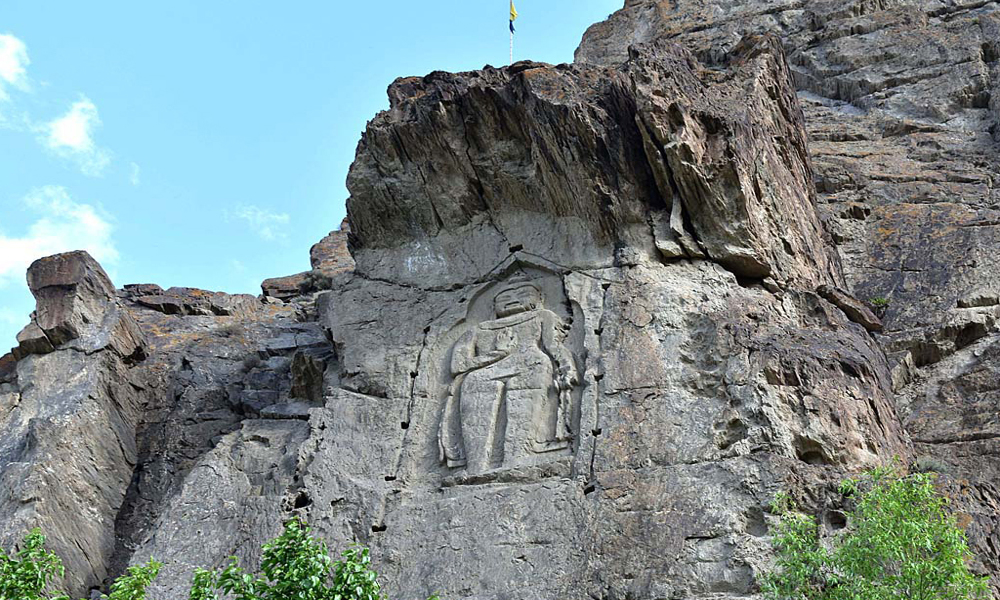Thousands throng Kargha Buddha
Description
Gilgit-Baltistan has been at the crossroads of cultures, religions and civilisations for centuries. Before introduction of Islam in the region, the people used to practice Buddhism or multiple forms of local pagan religions. The introduction of a rich cultural heritage and spread of Buddhism in Gilgit and surrounding regions is deeply linked to the movement along the Silk Route. Historical facts reveal that religious Buddhist caravans used to stay in a monastery here while passing through Gilgit. Kargah Buddha which is called Yashani in local language, a unique archaeological site a 7th century Buddha figure carved deep into the solid rock located outside of main Gilgit city about 9 km. Large standing Buddha with carved image in the cliff-face in Karghah Nala. Nearby towns are Barmas, Khur and Napura Baseen are adjoining towns. Since the 3rd century to the 11th century, Gilgit was a Buddhist center, a Buddhist monastery and three stupas containing Sanskrit manuscripts were excavated in 1931. According to an estimate the carving was completed in the 7th century. The Buddha was discovered alongwith ruins of a Buddhist monastery and three stupas about 400 meters upriver from the Buddha itself in 1938-39 following the discovery of so-called Gilgit manuscripts in 1931. Every year thousands of Buddhists from Japan, Korea and other parts of the world come to Gilgit city to see the Statue of Kargha Buddha.


